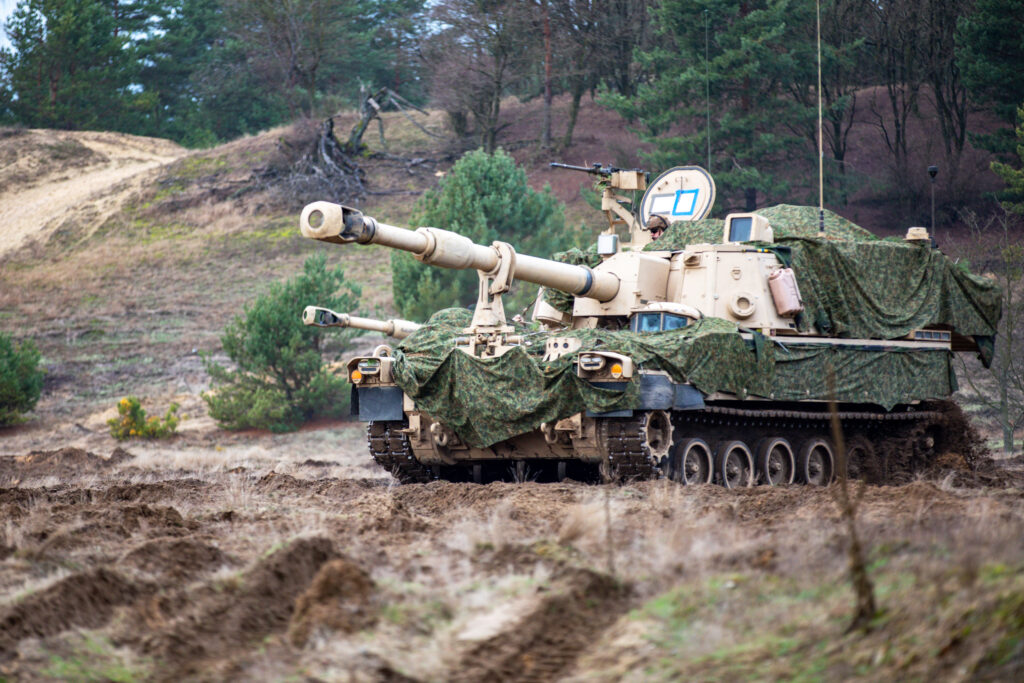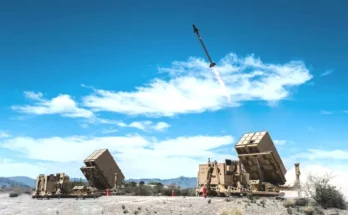 Source: U.S. Army National Guard
Source: U.S. Army National GuardThe U.S. Army’s search for a longer-range howitzer remains in motion. The service initially planned to integrate a long-range cannon with the M109 Paladin self-propelled howitzer but scrapped the effort due to performance issues in testing. The project was known as Extended Range Cannon Artillery.
Following the termination of the ERCA program, the Army’s FY25 budget request launched an effort to find a new howitzer to eventually replace the Paladin. This program is designed to address threats anticipated in 2040 and beyond. The service started with a study of existing howitzers on the market to determine whether any of those systems can offer increased range over the Paladin.
Competitive Evaluation Planned
An industry day was held in April 2024, attended by representatives from American Rheinmetall, AM General, BAE Systems, Elbit, Hanwha, and Krauss-Maffei Wegmann. The Army released an RFI in August 2024, with a competitive evaluation scheduled for FY25. This evaluation may result in a production contract award if any of the systems meet the Army’s requirements. The service anticipates beginning domestic production of a system within two years of a contract award, and it could start fielding new howitzers as soon as 2030.
The contractors that attended the industry event build a mix of wheeled and tracked options that could be considered by the Army. Rheinmetall and KMW jointly produce the tracked PzH-2000; KMW also has the wheeled RCH 155; AM General makes the Brutus system that can be equipped on a truck; incumbent BAE Systems has tested the Paladin with a Rheinmetall L52 cannon, and the company also manufactures the wheeled Archer howitzer; Eblit makes the wheeled M454; and Hanwha produces the tracked K9 Thunder.
Before the ERCA’s termination, the Army had launched an effort to examine options for wheeled 155mm howitzers to replace some of its towed M777 howitzer. That effort didn’t progress beyond an initial shoot-off. At the time, the service said it wanted to field a mobile howitzer that can more easily keep up with highly mobile Stryker formations and that provides more survivability than existing towed systems in near-peer conflicts.
A shoot-off took place in September 2021 involving systems from BAE Systems Archer, Elbit ATMOS/Iron Sabre, Nexter CAESAR, AM General Brutus, and Yugo/Global Ordnance NORA. At the AUSA conference, General Dynamics presented a Stryker equipped with a 155mm cannon as a potential option, and South Korea’s Hanwha and Japan’s Mitsubishi were seen as potential contenders as well.
The Army has requested $8 million in FY25 to fund initial next generation howitzer studies.
The service will also continue investing in developing new munitions intended for the original ERCA that could help increase the range of the next-generation howitzer, as well as existing systems.
Tactical Fires Study
A recently completed tactical fires study will help inform the direction of Army howitzer development. In early 2024, Army officials said the study called for more autonomous artillery systems with greater range and mobility, while shying away from towed artillery. Speaking at the AUSA Global Force conference, U.S. Army Futures Command head Gen. James Rainey said, “the future is not bright for towed artillery.” Future systems must be mobile to reposition quickly on the battlefield and away from potential enemy fire. Rainey also expressed interest in capabilities like an autonomous robotic cannon. The statements paint a bleak future for towed artillery, but opens the door to potential procurement of new self-propelled howitzers.
Despite the position on towed artillery, BAE Systems was tasked with building new M777 lightweight towed howitzer structures for the Army to replace systems donated to Ukraine, according to a January 2024 announcement from the company. The deal was valued at up to $50 million.
Shaun's deep-rooted interest in military equipment continues in his role as a senior defense analyst with a focus on the United States. He played an integral role in the development of Forecast International's U.S. Defense Budget Forecast, an interactive online product that tracks Pentagon acquisition programs throughout the congressional budget process. As editor of International Military Markets – North America, Shaun has cultivated a deep understanding of the vast defense markets in the United States and Canada. He is a regular contributor to Forecast International's Defense & Security Monitor blog and has co-authored white papers on global defense spending and various military programs.
image sources
- 1 ID Bull Battery Blasts into the European Theater Ready to Fight: U.S. Army National Guard




